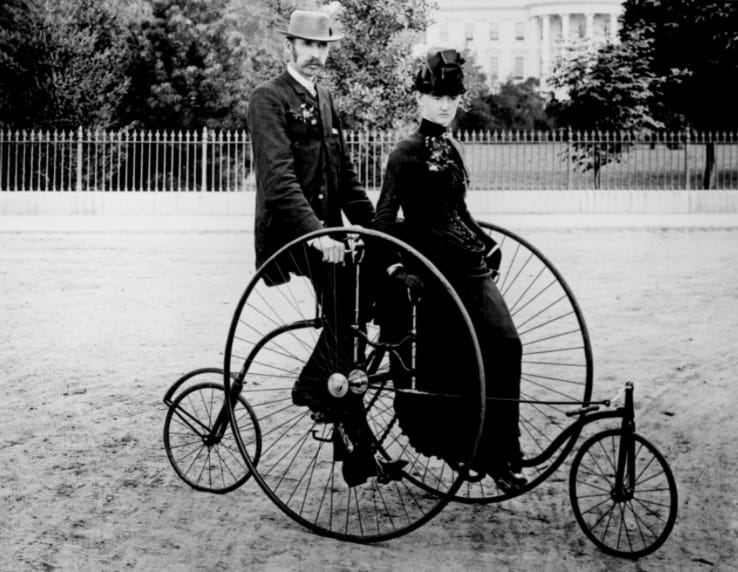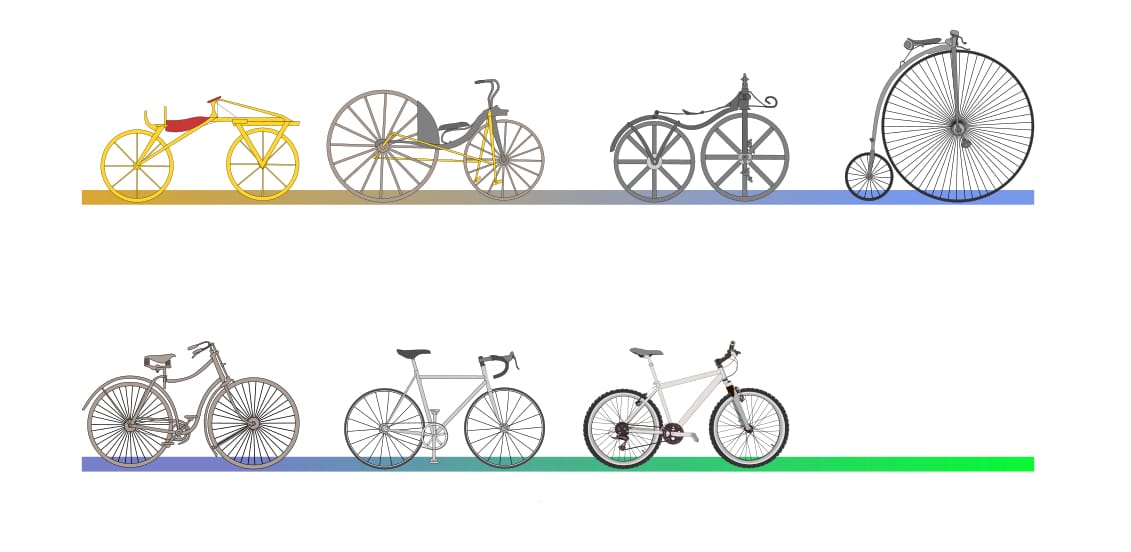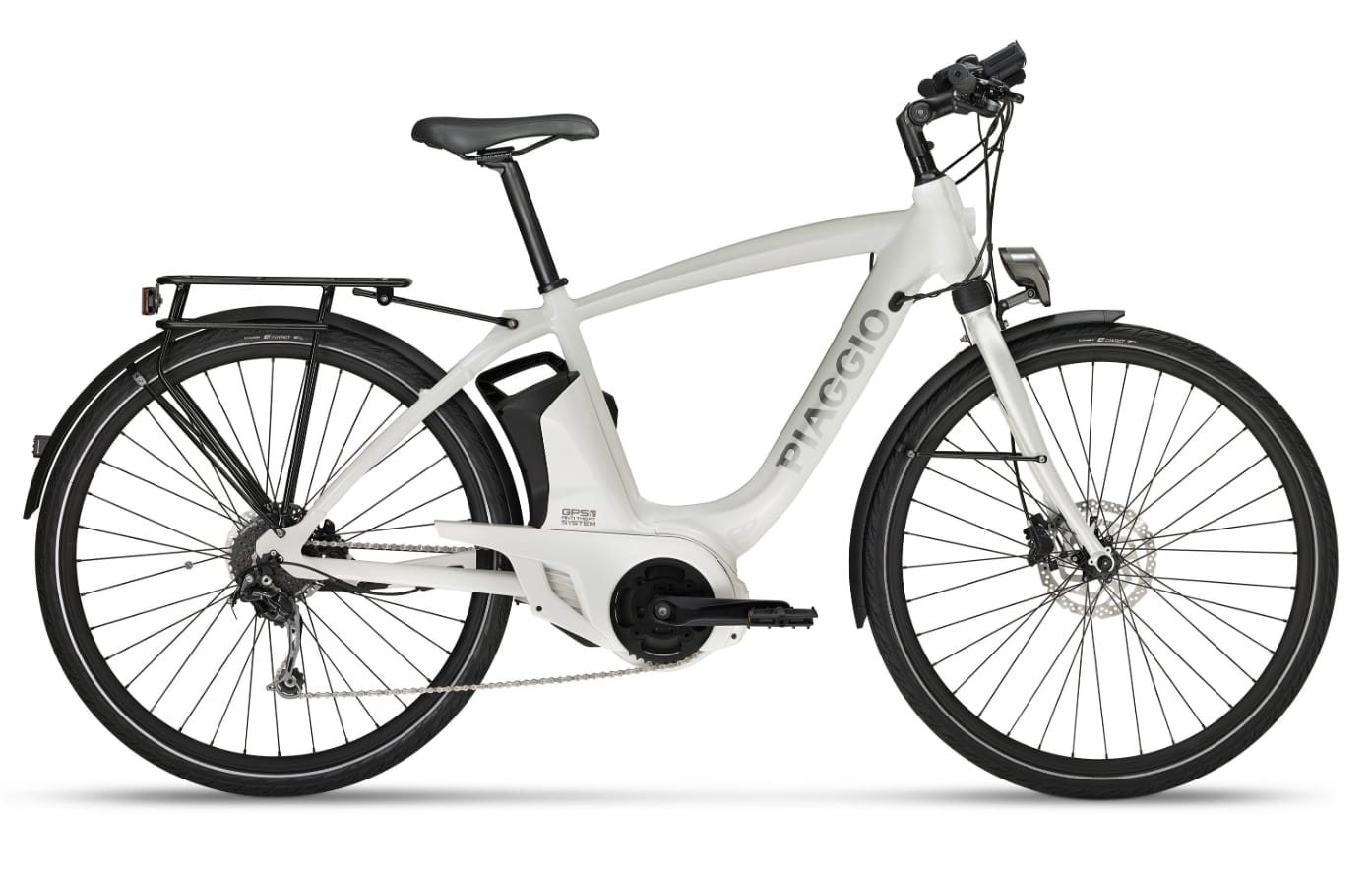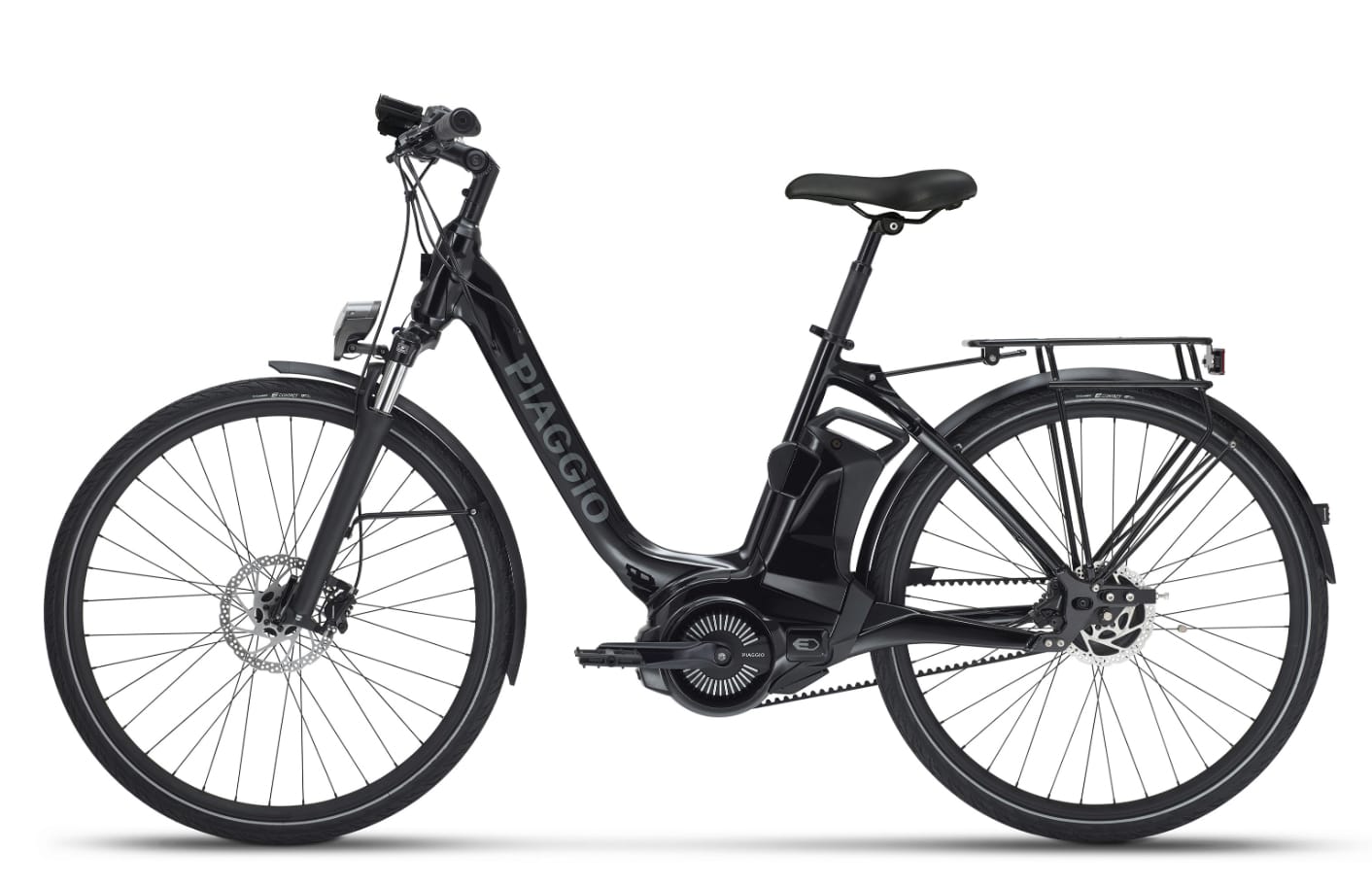

It was a difficult summer in 1816: the crops were insufficient and the horses died of starvation. German aristocrat Karl von Drais of the Grand Duchy of Baden sought an alternative to horses: he invented a new individual means of transport. In fact, he was credited for the 1817 creation of the "Laufmachine" (race machine), which the press referred to as the "Draisine" (in Italy "draisina"), after the name of the inventor, and later it would be called “velocipede”. The first trip documented by the German Baron dates to June of 1817, when he rode his "Draisine" 13 kilometers in less than an hour.
DRAISINE. The greatest improvement in this invention was the addition of steering. The wooden Draisine weighed 22 pounds and it had brass bushes inside the wheel bearings, a rear brake and 152 mm front wheel trail to obtain a self-stabilizing effect. The rider moved the draisine forward by pushing his feet against the ground; the pedals were added about forty years later. This project triggered a widespread fashion. Many thousands of specimens were built and used everywhere, giving rise to personal transportation without the use of horses.

Draisine of 1820 (about).
The draisine mainly became a means of pure recreation used by the bourgeois and aristocrats to such an extent that it was called “hobby horse” (fun horse) in England. Carriage builder Denis Johnson set up one of the first schools that taught how to ride the vehicle, which he also called pedestrian curricle (“walking gig”). In the 50 years when the draisine became popular, the various craftsmen indulged their fancy to invent the most varied and extravagant shapes, creating objects that responded not so much to technical criteria as to the dictates of fashion of that period.

The reconstruction of the “bicycle” designed by Leonardo, exhibited at the “Museo Leonardiano di Vinci” (Leonardo Museum of Vinci), in Tuscany.
Though Leonardo da Vinci (or one of his students) had already inserted the drawing of a vehicle like today's bicycle in the Atlantic Code, the invention of the draisine by the German aristocratic Karl Christian Ludwig Drais von Sauerbronn was already based on the introduction of the front applied steering wheel as a refinement of a previous invention of Count Mede de Sivrac, called celerifere (18th century). The inventor, Drais, claimed that this vehicle could replace the horse and cut management costs while offering a large portion of the population the opportunity to use "fast" personal transportation.

THE VELOCIPEDE. The velocipede, a descendant of the draisine, underwent a revival in Paris in the second half of the nineteenth century. Comprising a larger front wheel, to which pedals were connected, it was called "the velocipede bicycle", from which the Italian term “biciclo” derived. The wheels were made of wood covered with iron. Its origin? 1864 is considered the first year of its appearance in Paris.

Velocipede models in a German encyclopaedia of 1887.
The new paved boulevards of Paris had made it easy to ride. However, because the builders were imitating the technology of carriages, with their massive steel chassis, the weight of the velocipede was doubled to become almost 45 kilos. More comfort arrived with the introduction of solid rubber and the first ball bearing.
Velocipedes at the end of the nineteenth century.
There were attempts to introduce rear wheel drive to solve the front wheel problems, e.g. difficulty maintaining a smooth pedal thrust when turning, and limited speed. Yet another 40 years would pass before rear wheel drive became a definitive feature. Some used a chain, others used shafts and pedal cranks. Kirkpatrick MacMillan, a Scottish blacksmith, was attributed a design in 1839 of a rear-wheel drive using front-mounted rudder pedals to transmit power to the rear wheel.

European “Boneshaker” of 1868.
The bicycle was the logical extension of the "boneshaker" design: the front wheel was enlarged to reach the length of the cyclist's inseam (the greater the diameter, the farther the rider could go with one pedal thrust); additionally, the rear wheel was shortened and the frame was made lighter. In 1869 the Frenchman, Eugene Meyer, invented wheels with spokes and produced a High Bicycle model that remained the most innovative specimen until around 1880. The Englishman, James Starley, added the tangential spokes (which lent more stability and resistance to the wheels than the radial spokes did) and the step to mount his famous version of High Bicycle called Ariel or sometimes Ordinary. The ball bearings (from 1875), as well as the solid tyres and the steel frames with hollow sections, all became standard. Depending to the inseam of the cyclist's leg, the front wheel could reach a diameter of up to 1.5 meters. Consequently, the bicycles were fast, but unsafe.

Cyclists found themselves with their centre of gravity far from the ground, squatting precariously over the front wheel. The American bicycle "Star" was derived from an ordinary version, reversing the order of the two wheels: but now there was a danger of falling back when racing uphill.

Older people and women preferred the more stable tricycles or quadricycles, such as the Salvo Quadricycle by Starley, renamed Royal Salvo in honor of Queen Victoria who used one.

SAFETY BICYCLE. In 1884 John K. Starley made the first "safety bicycle" in Coventry, called "Rover", destined to gain tremendous commercial success: the forerunner of modern bicycles, its wheels were the same size and it had a chain drive. The invention of the tyre in 1888, attributed to John Boyd Dunlop, contributed to an increase in comfort.
200 YEARS OF EVOLUTION. In the next century, and today in the new millennium, the bicycle has undergone a continuous technical and stylistic evolution, with important stages (from the mountain bike to the electrically assisted pedal bike).

Apart from the specific competition models, the state of the art today is represented by the innovative Piaggio Wi-Bike: it is the new way to move because it is always connected to the rest of the world via web. It is the vehicle of the future for its ecological mobility, connected to the Internet and smartphones for a wide range of services and uses, from fitness to vehicle geo-location.


Wi-Bike goes well beyond the concept of an electric bicycle, providing innovative functions and new levels of interaction between cyclist, mechanical vehicle and the environment. It's really the new way of being...tech, safe, fit, power, cool, social and green!
HERE IS THE FULL ARTICLE: PIAGGIO WI-BIKE, "THE NEW WAY TO B".
wide.piaggiogroup.com/archive/wide4_16/scooter/index_en.html
PIAGGIO WI-BIKE WEBSITE:
www.piaggio.com/wi-bike/en_EN/#home